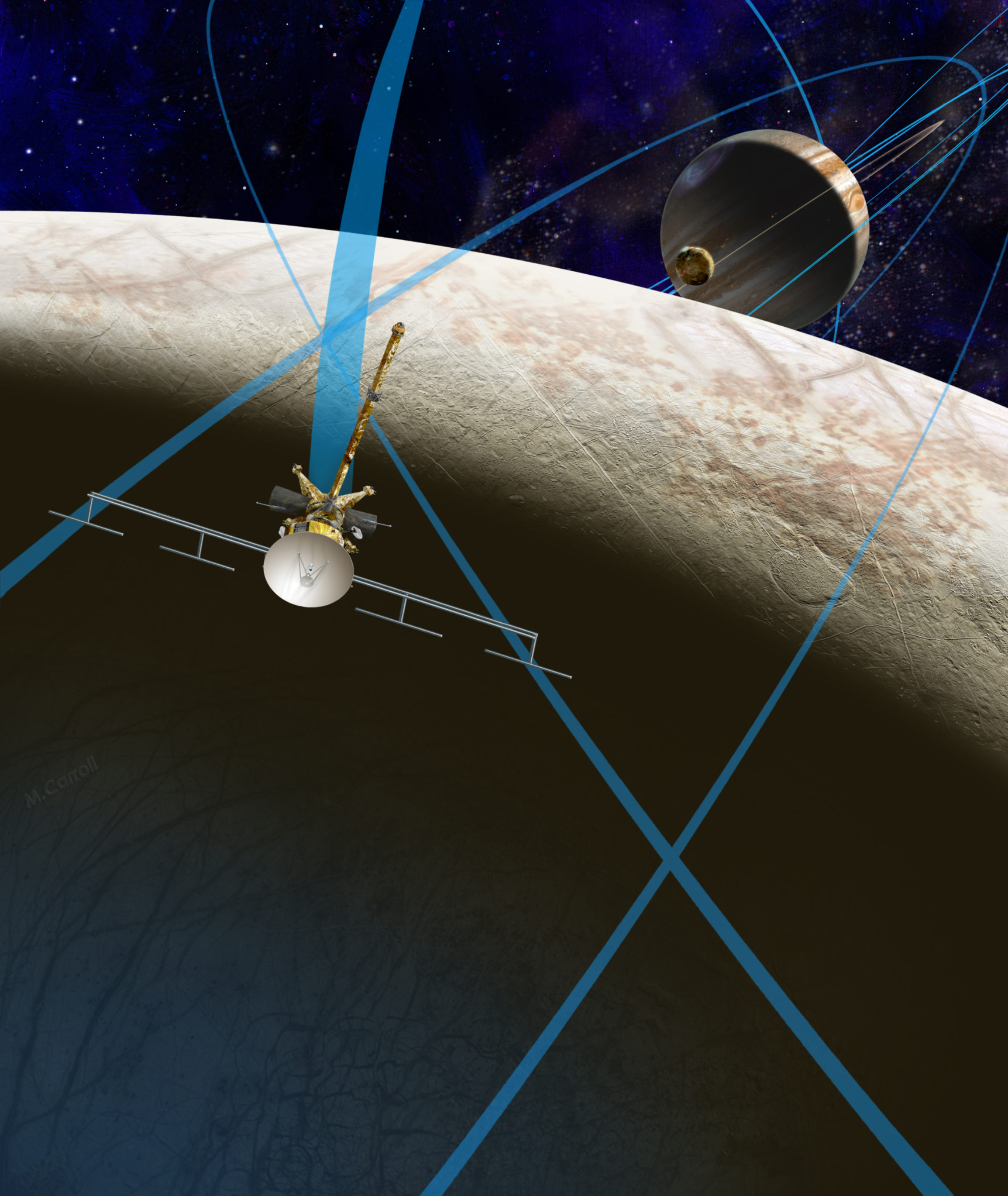Casey Dreier • Dec 12, 2013
Europa: No Longer a "Should," But a "Must"
Throughout history there are tipping points when the reasons to do something difficult become so compelling that no one can rightfully ignore them – times when we cross the threshold from "should" to "must."
Today we hit that tipping point for Europa.
This enigmatic moon of Jupiter has long called out to us with its liquid water ocean that is likely in direct contact with hot spots on a rocky core. We've all read Arthur C. Clarke's 2001 sequels – well, not all of us, but for decades both scientists and the public have felt the draw to this enigmatic moon. Confusingly, missions to explore Europa have languished in conceptual stages, never getting off the ground.
But today's announcement that the moon's liquid water ocean is likely spewing forth from large geysers on its surface changes things. Instead of a call for exploration, Europa cries out to us. It's venting its most habitable environment into space, greatly reducing the complexity needed by spacecraft to analyze its chemistry. Suddenly, we can perform initial scouting for organic molecules in Europa's oceans without the complexities of having to land and drill. That's huge.
It is rare that the universe does us a favor. This is something we shouldn't let pass us by.
NASA, with support from a number key people in Congress, has spent years studying Europa mission concepts. One, the Clipper, was the cover of our 2013 Equinox issue of The Planetary Report. The Clipper flies by Europa something like 45 times in a 3.5-year mission. This minimizes the time spent in the harsh radiation belts of Jupiter and saves a lot of fuel and time by not going into orbit around the moon. It costs half as much ($2.1 billion) as an orbiting mission would have, and would achieve nearly all of the same science.

This concept is so mature that NASA could have a spacecraft ready to launch by 2021 if we started building this in FY2015. Even better, if the SLS is ready to go, it could launch the Clipper direct to Jupiter. It would arrive in less than 2 years. That's a step up from a seven-year Venus-Earth-Venus-Earth-Earth flyby sequence or whatever we'd need.
The Planetary Society released a statement today calling for the White House and Congress to support a Clipper-style concept to Europa. The White House, if it wanted, could include a request for a "new start" for this mission in their 2015 budget request that they're putting together. A Planetary Science budget of $1.5 billion a year – our recommended number – could support the Clipper, the Mars 2020 rover, and restore funding for scientific research.
If you want to see a Europa mission in your lifetime, make sure your elected officials know about it. It's time to heed this cry.
Support our core enterprises
Your support powers our mission to explore worlds, find life, and defend Earth. You make all the difference when you make a gift. Give today!
Donate

 Explore Worlds
Explore Worlds Find Life
Find Life Defend Earth
Defend Earth

